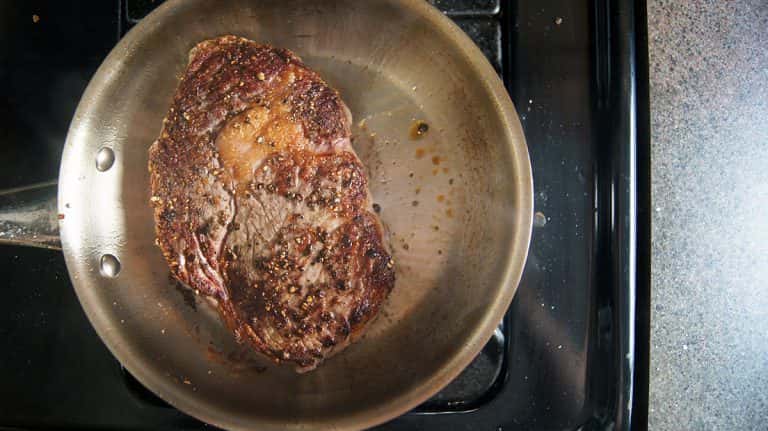Sautéing is a fast and easy way to cook thin pieces of meat, seafood or vegetables all the way through. Sautéing is also often times the first step towards cooking a thicker piece of meat through. Today, we have five simple tips on how to help your next sautéed meal turn out perfectly.
First, make sure you have a good skillet to use. You can use non-stick or a traditional stainless skillet, but whichever surface you choose, make sure that you purchase a good, large skillet. A good skillet will serve you well for a long time. Also, if you use a non-stick skillet, make sure you use non-stick tongs for flipping meat!
If you put the meat in the skillet without oil, you’d have a big mess, so our next tip is to use the right oil in the right amount. To start your sautéing, we generally add about two tablespoons of oil to a large pan. Use less for smaller pans. Extra virgin olive oil is delicious on salads, but it’s not great for sautéing. It has a relatively low smoke point, so it’ll start smoking and add off flavors to the food. Instead, use a refined olive oil or an oil with a higher smoke point like sunflower or vegetable oil
With the oil in the pan, it’s time to fire up the burner. Don’t put the oil in the pan when it’s hot, put the oil in the cold pan! You want to use a medium to medium high heat when sautéing. Hot, but not ripping hot. With the heat turned to medium high, don’t add the food until the oil is ready. As it heats, the oil will start to shimmer and form a spider web pattern. The shimmering means that you’re ready to cook.
Now, that we’re set up to cook, our fourth tip is to dry, season and space out your food in the pan. Wet meat won’t brown evenly and may even steam cook in the pan. Those are both bad things, so just take the time to pat your meat dry with a paper towel before you put in the pan. Once the meat is dry, season it with seasonings like salt or pepper before you put it in the pan. If you season the food after it’s cooked, you won’t affect the flavor of the meat, so make sure to season it before cooking. When you do put the meat into the pan, gently lay it in, moving it away from you so that oil doesn’t splatter on you. And make sure you space the meat out in the pan so that everything has room to cook.
Our last tip is maybe a little controversial, but here it is. We don’t believe in constantly flipping your food in the pan. Some people claim it cooks more evenly, but when we are sautéing meat, we are trying to develop a nice brown on the outside of meat. Browning develops after a prolonged time in contact with the pan, so flip your meat only once while it’s in the pan. When you flip, don’t use a fork, use tongs or a spatula. A fork will poke holes in the meat and let juices out of the meat.
There you have it, our five simple tips for sautéing meat. Sautéing is easy and, if you follow our tips, we’re confident you’ll get great results. If you have more questions, stop by the store to ask, or drop us a line! We’ll see you soon at Lake Geneva Country Meats.
